From the Director General
Welcome to the first edition of the DG eNews for 2013.
In this edition we give an overview of the department's achievements during an eventful and productive 2012.
The department has made significant progress in improving approvals performance and eliminating backlogs, introducing online lodgement of petroleum environmental management plans and Mining Proposals, and processing the continued high level of exploration applications, to name a few.
Despite continued global economic uncertainty, Western Australia is well positioned to maintain strong growth, backed by record resource sales and $167 billion of resource investment either committed or under construction.
DMP recently reviewed mine approval timelines over the past four years and statistics show that the average new mining project took just over two years to reach full approval.
This edition of the DG eNews also details the latest Exploration Incentive Scheme (EIS) Co-funded drilling recipients and how the department is strengthening regulations and community engagement for the emerging unconventional gas industry.
We also look at the recruitment of Indigenous trainees into the department, the renewed focus on dangerous goods, the expansion of the Mining Industry Advisory Committee (MIAC), and the development of a world class Carbon Capture and Storage (CCS) facility, plus lots more.
The DG eNews is a valuable tool for anyone interested in the future of the Western Australian mining and petroleum industry and provides updates on the latest activities of the department.
Richard Sellers
Director General, Department of Mines and Petroleum
DMP achievements during 2012
It has been an impressive year of achievements by the Department of Mines and Petroleum (DMP) which was listed by the Auditor General as one of the 2012 Top Best Practice agencies.
The Fraser Institute Survey of Mining Companies now ranks WA as the equal first preferred mining destination in Australia, and equal 11th in the world.
The department continues its move to online lodgement which now includes all Petroleum Environmental Management Plans, bridging documents, written notifications, Oil Spill Contingency Plans and revisions, Mining Proposals, Radiation Management Plans and Annual Environment Reporting.
It has also progressed automatic notification to other agencies of applications involving Aboriginal Heritage Sites and Programmes of Work, and continued to process a high level of exploration activity with 600-700 applications per quarter.
DMP has also achieved best practice with Environment, Mineral Titles, Petroleum, Royalties and Strategic Planning attaining Quality Management Systems certification (AS/NZC ISO9001:2008)
Approvals performance continues to improve and during the year 89 per cent of applications were finalised within agreed timelines, while 97 per cent of sites inspected achieved a good level of compliance with environmental regulations.
The department's efforts to reduce backlogs continues to pay dividends; In 2007-2008 nearly 19,000 mineral title applications were backlogged compared to 2012 where approximately 6000 applications were carried over into the final quarter.
This has been achieved despite a high level of new applications received during the year and management of more than 23,500 mineral titles across the State.
During the year DMP also cleared almost 30 per cent of applications that were stalled in the native title right to negotiate procedure.
The department also received a high rating from stakeholders for its geoscience information and advice receiving a rating of 4.3 on a scale of 1-5.
Key reforms
Safety Reform has seen an increase in the number of safety audits and inspections from 4599 in 2010-11 to more than 6,000 in 2011-12 with the recruitment of new inspectors across the Resources Safety Division (RSD).
The Reform and Development at Resources Safety Strategy (RADARS) was successfully concluded during the year, with cost recovery and fee increases for Major Hazard Facilities and Explosive Reserves implemented.
Petroleum Reform has also progressed over the year with the establishment of NOPTA and NOPSEMA on 1 January 2012.
During that period full service to industry was maintained, an executive liaison committee was established and agreements signed to recover costs for services provided to the Commonwealth.
Environmental Reform continues with the department consulting with industry, community groups and agencies involved with environmental management
The Mining Rehabilitation Fund (MRF) legislation passed through Parliament, and minimises the State Government's unfunded liability in respect of abandoned mine sites, while enhancing the ongoing capacity to manage and rehabilitate abandoned mines, leading to better environmental and community safety outcomes.
An online system has also been developed for industry to submit Annual Environmental Reports (AER).
Partnerships, stakeholders and community
During 2012 the department focussed on increasing community confidence in regulatory processes, including unconventional gas community and industry forums, fact sheets, and web information and publication of approvals performance each quarter.
The focus on Lead Agency / Inter-agency collaboration continues with the formalising of senior officer interagency communication and between DMP, Department of State Development, Department of Environment and Conservation and Environmental Protection Authority.
As a result DMP was a finalist in the Institute of Public Administration(WA) Awards for "Best Practice in collaboration across government agencies" category.
The department also established a Reconciliation Action Plan to demonstrate its commitment to increase Aboriginal and Torres Strait Islander representation within the agency.
A highly successful drilling program for Western Australia's first on-shore carbon capture and storage (CCS) project was completed during the year and the results are now being analysed.
The Harvey 1 well set a record as the deepest hole ever drilled by the Geological Survey of Western Australia (GSWA), reaching 2945 metres, and was part of the South West Hub CCS project.
The Exploration Incentive Scheme's (EIS) Co-funded drilling program resulted in funding for 70 drilling projects.
This included the discovery of nickel mineralisation at the Nova Project (Sirius Resources) using GSWA geochemistry and geophysics to identify the original nickel anomaly.
Some of the successful earlier projects funded by the scheme include the deep drilling which led to the re-opening of the Mt Magnet gold mine, as well as support for drilling instrumental in the discovery of the East Tropicana and Handpump gold deposits.
Other positive drilling outcomes include the Speewah vanadium deposit, the Yeneena copper discovery and the Theseus and Yalgoo uranium discoveries, as well as support for drilling by Sirius Resources at The Eye nickel project.
Additionally the Kimberley magneto-telluric survey was funded by the Kimberley Science and Conservation Strategy (KSCS) and the award winning GeoVIEW.WA online mapping system was developed.
Western Australia remains a resources hotspot
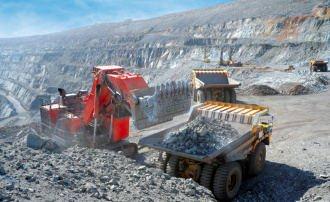
Despite global economic uncertainty, Western Australia is well positioned to maintain strong growth – according to Department of Mines and Petroleum (DMP) Director General Richard Sellers. "WA is uniquely placed to continue to attract investment," Mr Sellers said.
"We are in close proximity to Asia, have strong regulations in place, world-class infrastructure and an abundance of natural resources – so we are well placed to ride out any volatility."
Mr Sellers added that Western Australia continued to be the economic engine room to the rest of the nation following record $107 billion resource sales in 2011.
He also noted the recent shift in sentiment against resources industry investment in recent months seemed excessive.
"With an estimated $167 billion worth of resource investment either committed or under construction, the long term outlook for the State's resources industry still remains positive," he said.
Mr Sellers said he believed that the recent media speculation regarding the 'end of the resources boom' was unfounded.
"Economists will tell you a boom is defined by a sharp rise and fall and this did not happen in the first place – so to say the boom has ended isn't really true," he said.
"In my eyes, the growth of the WA resources industry is now levelling, which I understand is providing the government with some space to tackle skilled workforce needs head on."
Mr Sellers said DMP would continue to work hard to sustain the long-term growth of the WA resources industry.
"The department will remain fair, robust and consistent in all of its dealings across the industry," he said.
"But most importantly, we will continue to support industry through initiatives like drilling subsidies, faster online approvals, minerals research and transparent regulation."
Joint delegation promotes Asian mining investment
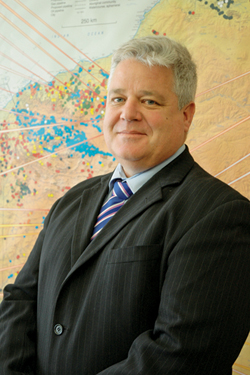
The Departments of Mines and Petroleum (DMP) and State Development (DSD) have joined forces to strengthen Western Australia's trade and investment relations with Asia.
DMP Director General Richard Sellers, and DSD Director General Steve Wood, made the week-long visit to Japan and Singapore towards the end of last year.
Mr Sellers said the pair attended more than 12 meetings with corporate and government representatives.
"All operators, including those with large WA investments such as Mitsubishi Corporation, showed considerable interest in WA's improved approvals process," Mr Sellers said.
He said Mr Wood used the Chevron Wheatstone project as an example of an impressive 18-month approvals timeline.
"This and the Sandfire story – where that Doolgunna copper project had an eight-month approvals timeframe – impressed executives," Mr Sellers said.
"Few of the companies were aware that there is an estimated 229 trillion cubic feet of shale gas in the Canning Basin, where Japanese company Mitsubishi has shown interest."
He said it was estimated that WA held about 288 trillion cubic feet of shale gas.
Mr Sellers said strong attention was also given to his department's Co-funded Exploration Drilling Program, which covered up to 50 per cent of successful candidates' direct drilling costs – capped at specific amounts depending on the project.
"I explained the program has offered more than $25 million to 255 projects across five rounds of funding, which really captured their attention," Mr Sellers said.
"They were also particularly attentive when I spoke about how the 2011-12 Fraser Institute Survey rated Western Australia as a top 20 global investment destination."
Mr Sellers said the trip was a huge success.
"Having Steve Wood and I there worked really well, considering many companies and government officials had questions and issues covered by our different departments," he said.
WA mine approval timelines now average 28 months
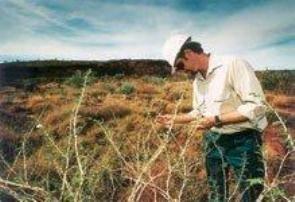
Recently released statistics compiled by the Department of Mines and Petroleum (DMP) have shown that the average new mining project in Western Australia took just over two years to reach full approval.
In the same period DMP received and assessed 1182 mining proposals.
The figures are in contrast to recent media speculation that approval timelines had blown out to a five-year turnaround.
"This is an excellent result considering mines are becoming more complex and that proponents face increasingly stringent environmental regulations," DMP's Director General Richard Sellers said.
"I am pleased that the State Government's support of the resources industry has also promoted recent strong growth, particularly through the acceleration of approval timeframes," Mr Sellers said.
DMP's 2012 Third Quarter Approval Performance Report provides the approval timelines for mines referred to the WA Environmental Protection Authority (EPA) and approved by the State Government over the past four years.
The results indicate that it takes an average of 28 months to gain approval for a mine in Western Australia.
The approval process covers the time taken by government, completion of the required documentation by the proponent, which can take up to a year, and includes public consultation and appeal periods.
DMP considers the time it takes to get a mine approved is measured from the date the application is referred to the EPA to the date the Mining Proposal is approved, allowing for the construction of the mine to begin.
It excludes the time taken for the tenement grant and exploration approval process.
One of the stand out performers was the Sandfire Resources Doolgunna Copper Gold Project which went from discovery to production in three years, taking only eight months to complete the mine approval process.
The full 2012 Third Quarter Performance Report and the Western Australia mine approval timelines Dec 2012 are now available.
Exploration drilling recipients announced
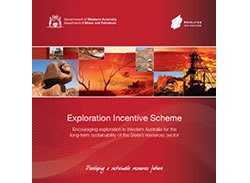
In December 2012, Department of Mines and Petroleum (DMP) Director General Richard Sellers announced the successful applicants for Round 6 of the Co-funded Exploration Drilling Program.
Mr Sellers said the projects would be drilling for a wide spectrum of commodities when he released details of 57 drilling projects to be undertaken in 2013, including three prospecting projects, which have attracted almost $6 million in co-funding.
"The Exploration Incentive Scheme's (EIS) Co-funded Drilling Program provides incentives to drill in underexplored areas to ensure the continued economic prosperity of the State's resources industry," he said.
"Established three years ago, this highly competitive drilling program offers two rounds of co-funding a year, and has already reaped rewards with commercially promising and scientifically interesting projects, such as deep drilling which led to the re-opening of the Mt Magnet gold mine, and drilling that was instrumental in the discovery of the East Tropicana and Handpump gold deposits.
"Other positive exploration drilling outcomes include the Speewah vanadium deposit; the Yeneena copper discovery; and the Theseus and Yalgoo uranium discoveries; as well as support for drilling by Sirius Resources at The Eye nickel project before the discovery of the Nova deposit."
The program provides co-funding of up to 50 per cent of direct drilling costs with caps of $150,000 for a multi-hole project, $200,000 for a single deep hole, and $30,000 for a prospector's project.
Mr Sellers said more funding would be advertised during December, calling for applications in February-March 2013 for projects to be undertaken in the 2013-14 financial year.
The Co-funded Drilling Program was the flagship program of the State Government Royalties for Region's-funded Exploration Incentive Scheme.
The program will encourage industry to drill in areas that have mineral, petroleum or geothermal potential and ultimately help to identify new opportunities to ensure the future prosperity of Western Australia's resources sector.
A list of successful applicants, a map of project locations and more information about the Co-funded Drilling Program is available at: www.dmp.wa.gov.au/eisdrilling
Mining growth behind Perth's growth
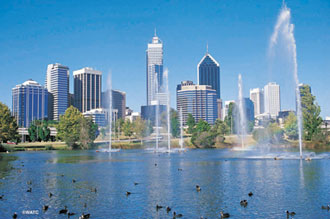
Perth is a city that continues to grow as people from other parts of the world and Australia swarm to the capital to take part in the mining boom.
The latest release of data from the 2011 Census shows Perth as a city on the move, with the most mining workers in the country.
At the 2006 Census, of Perth's then 1.5 million population, 18,500 had been living in another State a year earlier. Another 31,200 had been overseas.
By last year's Census, the number from interstate who had been living in Perth less than a year had grown to more than 21,300, while there were more than 39,100 migrants.
This equates to approximately 1000 people a week arriving in Perth.
Those who had been living interstate or overseas five years earlier now account for more than 30 per cent of Perth's population.
Nationally, the proportion of people moving has been falling to sit at its lowest level in more than 15 years.
Central Perth has 14,687 residents saying they work in the mining industry, almost double the number of mining workers in the next mining centre, East Pilbara.
While the mining boom drove most of the changes in WA's workforce in the past five years, other sectors of the State are changing.
Workers in the biggest employment sector, healthcare and social assistance, grew almost 20,000 between 2006 and last year.
Strengthening regulations and community engagement a focus for unconventional gas

The Department of Mines and Petroleum (DMP) is continuing to strengthen its regulatory framework around the emerging unconventional gas industry in Western Australia.
With the industry in the early stages of exploration, the opportunity exists to further refine and adapt State petroleum regulations before any production activities are considered.
Following the introduction of new environment petroleum regulations in August, the department will make new petroleum resource management and administration regulations available for public comment in early 2013.
The new regulations are the second reform area implemented following a 2011 independent review of the State's unconventional gas activities by petroleum law expert, Dr Tina Hunter, to improve legal enforceability.
The changes reinforce a State Government commitment to a regulatory regime that ensures responsible development of gas resources, while protecting the environment, groundwater resources and public health.
"The regulations will be objective-based to enable operators to identify and address the unique requirements of operating in a specific geographical location" DMP Petroleum Executive Director Bill Tinapple said.
"Focusing on subsurface operations, the regulations will further strengthen well integrity requirements. Regulations are designed to provide aquifer protection achieved through multiple layers of pressure tested casing separating the well from groundwater."
In conjunction with the new regulations DMP will also be developing guidelines and checklists for operators.
The regulations will replace the Schedule of Onshore Petroleum Exploration and Production Requirements 1991.
"The changes reinforce a Western Australian Government commitment to a regulatory regime that ensures responsible development of gas resources, while protecting the environment, groundwater resources and public health," Mr Tinapple said.
In recent times, the public has received highly contrasting opinions and factually inaccurate information regarding the unconventional gas industry in WA.
To address information gaps and concerns, the department recently hosted a community engagement workshop in the Mid West in partnership with the Australian Petroleum Production Exploration Association (APPEA) and facilitated by the Commonwealth Scientific and Industrial Research Organisation (CSIRO).
More than 50 people participated from a variety of community groups including land owners, farmers, industry operators, environmental groups, Aboriginal interest groups and local government.
Presenters during the workshop included Ray Hortin from Protect Our Water and Environment (POWER), Cameron Trees from Yamitji Marlpa Aboriginal Corporation (YMAC), Darren Simmons from the Shire of Irwin, Michelle Andrews from DMP, Stedman Ellis from APPEA and Member for the Agricultural Region, the Hon. Phil Gardiner.
"Workshop participants were able to voice their opinions, raise concerns and offer recommendations about future community engagement methods," DMP Deputy Director General Strategic Policy, Michelle Andrews said.
The feedback and information gathered from the workshop was released in a report by workshop facilitator CSIRO in December 2012.
"Recommendations from the report will assist the department to develop future community engagement methods which address identified information gaps and meet community needs," Ms Andrews said.
Following the Mid West workshop, a similar workshop is planned for the North West in early 2013.
2012 hydraulic fracture stimulation activity summary
Three approved small scale petroleum exploration wells in the northern Perth Basin have undergone hydraulic fracture stimulation (fraccing) in 2012.
- Arrowsmith 2, located 45 kilometres south of Dongara, was fracced in July at depths of 2639m to 3300m.
- Woodada Deep 1, located 12 kilometres west of Eneabba, was fracced in August at depths of 2283m to 2425m.
- Senecio 2, located 15 kilometres east of Dongara, was fracced in August at depths of 2643m to 2685m.
The three activities were the most inspected petroleum activities in recent department history, with site visits by specialist DMP inspectors. Compliance auditing was conducted against approved Environment Management Plans assessing environment, drilling and safety regulation standards.
All three activities met with all regulatory compliance standards, with some minor unrelated housekeeping issues identified.
Want to keep updated about the regulation of the unconventional gas industry in Western Australia? Subscribe to our free Unconventional Gas RSS feed at www.dmp.wa.gov.au/onshoregas. Updates include department media releases, community engagement activities and information materials such as fact sheets.
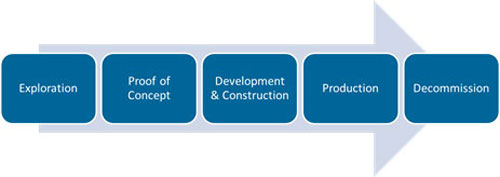
630 words
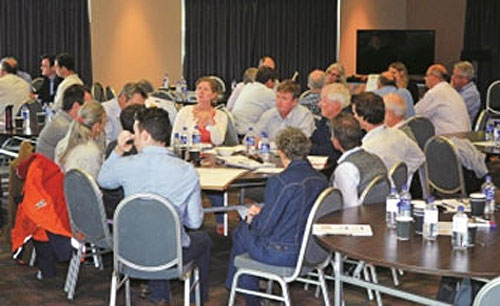
Participants discuss unconventional gas industry concerns and aspirations in groups during
the Port Denison community workshop in October.
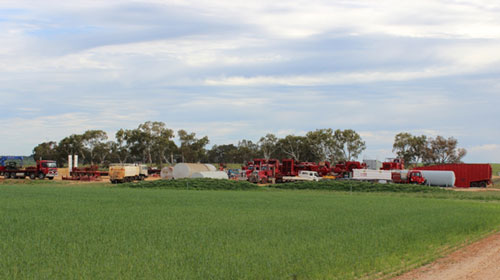
Hydraulic fracture stimulation activities at the Senecio-02 well site 15km east of Dongara.
Government positions offered to Indigenous students
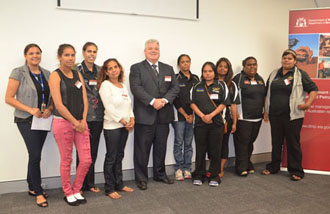
DMP Director General Richard Sellers at
the David Wirrpanda Foundation Open day.
In 2013, the Department of Mines and Petroleum (DMP) will be offering entry level employment opportunities to Indigenous students who have completed the David Wirrpanda Foundation's (DWF) Solid Futures Program.
These employment opportunities will provide each individual with the opportunity to utilise the knowledge and skills gained in the program while providing each individual with valuable paid work experience.
In October, DMP held its annual Open Day for DWF students providing them with the opportunity to visit the department and gain an understanding of its business, while learning about potential career pathways.
This year nine students visited DMP and had the opportunity to meet and hear from DMP Director General, Richard Sellers on the resources industry and the important role our department plays.
Students also shadowed a DMP staff member to observe what a DMP employee does on a typical day and how our individual efforts contribute to achieving the department's vision.
DWF students were then invited to express an interest in the entry level positions commencing in 2013.
DMP will continue to partner with the DWF to create interest amongst Indigenous students regarding the employment opportunities with department.
Building partnerships and providing opportunities for Aboriginal and Torres Strait Islander people will help the department achieve its reconciliation vision as outlined in the DMP Reconciliation Action Plan (RAP) launched earlier this year.
Renewed focus on dangerous goods
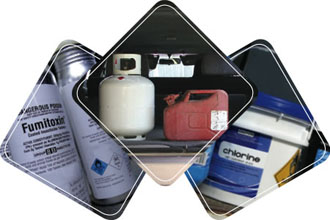
As part of Safe Work Australia Week in October, the Department of Mines and Petroleum (DMP) worked to improve the general public's safety awareness when transporting small quantities of dangerous goods.
At present, dangerous goods licences are not required for small amounts of dangerous goods, such as those purchased at hardware or pool stores.
However, drivers still need to adhere to rules such as segregating or separating mixed dangerous goods loads and ensuring adequate ventilation.
To promote this, DMP Dangerous Goods Director Philip Hine said the department decided to run the October awareness campaign – making drivers aware of the rules and risks surrounding the transportation of small quantities of dangerous goods.
"While transport industry operators are guided by the Australian Dangerous Goods Code, some small private operators like couriers, tradesmen and farmers have a lack of understanding in this area," he said.
"This means they're adopting poor transport practices, particularly when transporting fuels, cooking and welding gas, and toxic products such as fumigants, pool chemicals and cleaning agents."
Some common mistakes the department is witnessing involve passenger vehicles carrying liquefied petroleum (LP) gas cylinders and fuel jerry cans inside vehicles.
In other cases, couriers may have a mixed load of pool chemicals in the back of their vans.
"It is not unusual to see trade vehicles with oxy-acetylene gear in the back — with the gas regulators still attached," said Mr Hine.
"In country areas, fumigants and other toxic chemicals have been found on the seat or cabin floor."
Mr Hine added some drivers needed to realise that chemicals can react when mixed – potentially leading to fires, explosions and toxic gas.
"It is important to know which chemicals need to be separated or kept apart," he said.
"It wasn't too long ago that a driver was badly burnt after lighting a cigarette in a vehicle where petrol fumes had accumulated after venting from a jerry can.
For more information on dangerous goods safety, visit www.dmp.wa.gov.au/DangerousGoods
Safe Work Australia Week 2012 ran from 21 to 27 October.
WA's top safety boss takes out national award
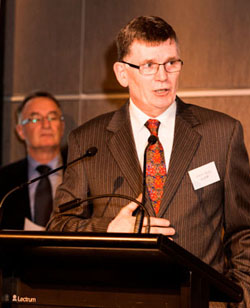
Western Australia's head of Resources Safety has been named the national 2012 Occupational Health and Safety Leader of the Year.
Department of Mines and Petroleum (DMP) Resources Safety Executive Director Simon Ridge took on 19 competitors in October, to claim the prestigious title at the Next Generation Mining Australia Summit in Adelaide.
Mr Ridge – who is only two months into his new DMP role – was recognised for his tireless work in the State Government's ongoing resources safety reforms.
In his previous role as the department's Mines Safety Director, Mr Ridge was instrumental in the recruitment of additional safety inspectors and a new industry funded system under the Reform and Development at Resources Safety (RADARS) strategy.
RADARS was established in 2010 as part of the State Government's response to independent reviews and inquiries, such as the 2009 Kenner Review of the Mines Safety and Inspection Act 1994, and a spate of mining fatalities.
"The department now has 63 safety inspectors who assess operations on a site by site and sector by sector basis, which is a great outcome," Mr Ridge said.
"But we're obviously doing so much more in the area of safety, so it is really humbling for myself and the whole team behind me to be recognised in this way."
The accolade came in the same week as the new-look Mining Industry Advisory Committee (MIAC) was announced, with Mr Ridge taking over as chairperson and the panel expanding from 7 to 11 members.
"I'm honoured to be chairing MIAC, as it is an expert group that will continue to advise the State Government on issues surrounding occupational safety and health in the mining industry," he said.
Mines and Petroleum Minister Norman Moore said he commended Mr Ridge.
"The award recognises Simon's outstanding contribution to safety and reform in the Western Australian resources industry," Mr Moore said.
Mr Ridge was nominated by the Next Generation Mining Australia Summit's standing committee, an independent advisory board consisting of 20 mining leaders.
The award marks the second 2012 title for Mr Ridge, who received the Australasian Institute of Mining and Metallurgy's Jim Torlach Health and Safety Award in June.
For the latest information on safety reforms, log onto: www.dmp.wa.gov.au/safetyreform
WA resources industry continues to break records

New resources industry statistics released in November by the Department of Mines and Petroleum (DMP) reinforce Western Australia's position as a national economic powerhouse.
WA's minerals and petroleum industry returned $106 billion in sales during 2011-12, a 4.4 per cent increase from the $102 billion reached in 2010-11.
Iron ore remained the most valuable commodity totalling $61.1 billion during 2011-12, with a record 455 million tonnes sold – representing a 14 per cent increase.
The second best performing sector was petroleum, with sales increasing by 2.4 per cent to $23.8 billion. Gold was also a solid performer in 2011-12, valued 14 per cent higher at $9.4 billion.
DMP Director General Richard Sellers said he was pleased that, despite global economic uncertainty during 2011-12, investment activity in WA had further strengthened.
"The State's mining industry attracted a record $45 billion in investment during the past financial year, which was an astounding 58 per cent increase from 2010-11," he said.
Mr Sellers added he believed the latest figures showed Western Australia was uniquely placed to continue to attract investment, despite global economic uncertainty and commodity price movements.
"We all know there has been speculation about the end of the resources 'boom', but this did not even exist in the first place – as a 'boom' is represented by an acute rise and fall," he said.
"What these latest statistics show is that the WA resources industry remains robust, and much of this is due to WA's close proximity to Asia and extensive reserves."
Background
- Iron ore and gold account for 86 per cent of all mineral sales in 2011–12
- 2011-12 WA resources industry statistics can be found at: www.dmp.wa.gov.au/1525.aspx
Advisory group expands expertise
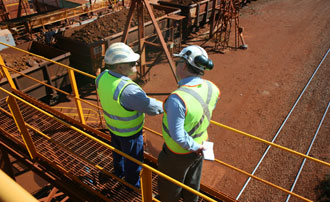
A key advisory group for Western Australia's mining industry has been expanded to include greater representation from the sector.
Minister for Mines and Petroleum Norman Moore said the Mining Industry Advisory Committee (MIAC) was originally represented by seven members but he had since appointed four new experts.
He said the newly appointed expert members were Robert Allan, Christopher Davis, Peta Libby and Robert Mincham.
"The restructure means MIAC will now have greater representation from the Chamber of Minerals and Energy; Association of Mining and Exploration Companies; and Unions WA, as well as four independent health and safety specialists," Mr Moore said.
"Given the WA mining industry generated $83 billion in sales during 2011 and currently employs around 90,000 people, this committee's work is crucial."
Mr Moore said the Department of Mines and Petroleum Resources Safety Executive Director, Simon Ridge would replace his predecessor Malcolm Russell as committee chairperson.
He said the move was prompted by the Bob Hirte Review in late 2011, which recommended the committee increase industry consultation.
The Minister said health and safety in WA's mining sector continued to be the State Government's main priority.
"MIAC has an important role to advise the State Government on matters relating to occupational safety and health in the mining industry, so the more experts we have in one room, the better," Mr Moore said.
He said the committee provided advice on health and safety laws to the Minister for Mines and Petroleum, the Minister for Commerce and the Commission for Occupational Safety and Health.
Mr Moore said the committee also looked at various guidelines to ensure the industry's real needs were being met.
He said MIAC members were appointed for a three-year period and the committee met bi-monthly.
WA mines safety gets new director
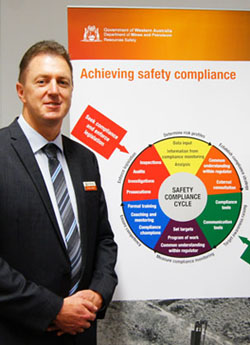
Western Australia's mines safety has come under a new watch, with the appointment of a 25-year industry veteran as Department of Mines and Petroleum Resources Safety Mines Safety Director.
Andrew Chaplyn takes up the position left vacant after his predecessor, Simon Ridge, was promoted earlier this year to Resources Safety Executive Director.
Mr Ridge said the qualified mining engineer was an ideal fit for the role.
Mr Chaplyn has worked with the department as a regional and district mines inspector for three years and has helped drive resources safety reform in WA through the Reform and Development at Resources Safety (RADARS) strategy.
"He has a strong commitment to safe working environments and worked in many senior leadership roles across the industry," Mr Ridge said.
."I am confident Andrew will continue to hold the industry to account, applying the highest standards through risk assessments, investigations, inspections, audits and safety interactions."
Mr Ridge said DMP was committed to overhauling resources safety in the WA mining industry and had taken significant steps in the past two years to introduce reforms.
"The State Government introduced a cost-recovery system, which DMP administers, to help improve capacity and increase the number of mines inspectors to ensure world best practice regulatory standards for our resources sector," he said.
"The ultimate objective is to establish resilient safety cultures in the sector to help reduce the number and severity of incidents with the aim to reach a 'zero harm' goal. I am pleased to be able to say there has not been a WA mining death for 16 months."
"Andrew's appointment furthers those aims, and I look forward to working with him to implement changes that continue to improve mining safety for years to come."
Mr Chaplyn said when he first applied for the position the department made it very clear that there were some changes coming through the Reform and Development at Resources Safety Strategy (RADARS), and he was definitely keen to take up the challenge."
He said that, while he had been instrumental in RADARS over the past three years, he was already relishing leading the mines safety reforms as part of his new role.
"I'll obviously still be involved in the recruitment process of our new inspectors and making sure the correct training is underway," Mr Chaplyn said.
"I want to make sure inspectors are confident before they get out in the field.
"It's all about creating a positive safety culture across the industry."
He said he was now driving risk management training to all key staff.
Fact File
- The Resources Safety Reforms were a direct response to independent reviews and inquiries, such as 2009 Kenner Review of the Mines Safety and Inspection Act 1994, and a spate of mining fatalities
- More information on safety reforms at: www.dmp.wa.gov.au/safetyreform
State moves to protect Horizontal Falls
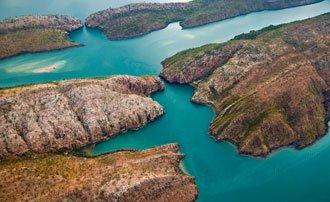
The State Government has established a mining exemption area prohibiting future mining activity in an area near the West Kimberley tourist attraction, Horizontal Falls.
Mines and Petroleum Minister Norman Moore said the Mining Act 1978 Section 19 Exemption Area provided greater protection for the attraction than national park status.
"The State has moved to protect the falls due to its unique geological features and subsequent tourism activities in the area," Mr Moore said.
"The exemption area covers 72 square kilometres of land surrounding the Horizontal Falls. Current and future mineral exploration and mining activities will be prohibited in this area."
Horizontal Falls is located 110km north north-east of Derby in the West Kimberley region.
The announcement of the exemption area comes after pending exploration applications in the area were voluntarily withdrawn by industry operators as a show of support for the State's move to protect the falls.
As its name suggests, the Horizontal Falls is a rare natural phenomenon where extreme tidal changes cause the sea to rush through two narrow gaps within a major water body - creating a spectacular wild-water visual of nature at its best.
Following the creation of the exemption area, the Horizontal Falls has been nominated for inclusion on the Register of State Geoheritage Sites.
The move follows a State Government decision in July to prevent future coal mining in the Margaret River area by terminating all pending applications for coal exploration activities within a 230-square kilometre zone.
Minister Moore said the decision followed Environmental Protection Authority (EPA) advice which indicated coal mining in the area posed an unacceptable environmental risk.
Minister rejects claims DMP has unhealthy unconventional gas industry links
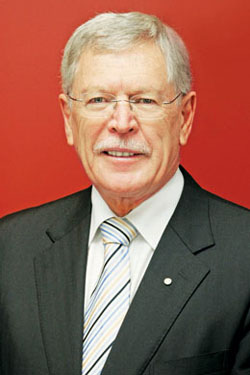
Mines and Petroleum Minister Norman Moore, has rejected claims by the Conservation Council of Western Australia (CCWA) that his department had formed an unhealthy relationship with the unconventional gas industry.
Mr Moore said it was ludicrous to suggest the State's regulator, the Department of Mines and Petroleum (DMP), had established an unhealthy relationship with industry, simply because they were providing communities with information about the hydraulic fracturing process, commonly known as 'fracking'.
He said the CCWA comments were made following the first of a series of planned community briefings.
"The council conveniently omitted the fact that the forums include the independent scientific body CSIRO which is working with industry and DMP to co-ordinate the workshops specifically designed to address community concerns about unconventional gas and hydraulic fracturing," Mr Moore said.
"It also overlooks the fact the workshops are a direct response to communities wanting more information about the industry and fracking process."
He said it was incumbent on DMP to inform the people of WA about the regulatory processes in place designed to protect the environment and communities.
"The department is responding directly to increasing public demand for information and more transparency from Government," Mr Moore said.
"This initiative brought together the department, the CSIRO and the Australian Petroleum Production and Exploration Association (APPEA) to provide fact-based information sessions."
He also addressed CCWA criticism of the Exploration Incentive Scheme (EIS), saying the program was designed to ensure WA's resources sector had a long-term viable future.
"The State's resources sector, valued at $107 billion, continues to be the powerhouse for the WA and national economies, accounting for 92 per cent of merchandise exports for the State and 46 per cent for the nation," Mr Moore said.
"The highly competitive EIS program supports exploration for a range of resources, not just the unconventional gas sector," he said.
"WA attracted the bulk of exploration expenditure in Australia during 2011-12 and I am sure the program contributed to that."
World-class facility to advance CCS
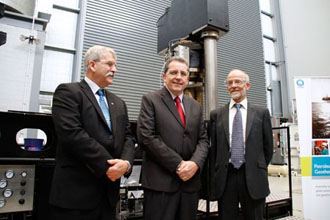
CSIRO Energy Group Executive Dr Tom Hatton, Federal Minister
for Tertiary Education, Skills, Science and Research Chris Evans
and DMP's Deputy Director General Approvals Dr Tim Griffin.
The development of a world-class facility to advance carbon capture and storage (CCS) technologies will provide critical research and support for Australia's first CCS Flagship, the South West Hub Project in Western Australia.
The National Geosequestration Laboratory (NGL), launched in September 2012, is a collaboration between the Commonwealth Scientific and Industrial Research Organisation (CSIRO), the University of Western Australia (UWA) and Curtin University.
The NGL is part of the Federal Government's Clean Energy Initiative CCS Flagship and Education Investment Fund (EIF) Programs and was awarded $48 million in funding from the Federal Government.
The primary research focus of the NGL is to provide government and industry certainty regarding the suitability and viability of large-scale geological storage of CO₂ – a process that involves injecting CO₂ deep underground and trapping it in geological structures.
The Western Australian Department of Mines and Petroleum (DMP) will also provide $400,000 operating expenditure over two years to enable close co-operation between CCS projects and the researchers undertaking studies on their behalf.
DMP had played an active role in establishing this project and, together with the Western Australian Energy Research Alliance (WA:ERA) and partners, led a delegation to Canberra in 2010 to discuss funding.
The facility will provide critical research and support Australia's first CCS Flagship, the South West Hub Project, and other national and international CCS projects.
This will be an important facility for the South West Hub Project and gives the State unequalled research capability and capacity by offering direct and immediate access to state-of-the-art research facilities within WA.
The facility will operate as a 'hub and spoke' model and be centred at the Australian Resources Research Centre at Technology Park, Kensington, with a node at Curtin University and the first NGL research node to be built at the University of Western Australia to house a CCS geophysics and geochemistry research facility.
The first major role of the facility will be a detailed analysis of the core and electronic data from the recently completed Harvey 1 Well.
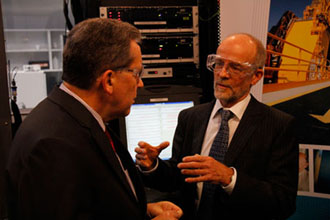
Federal Minister for Tertiary Education, Skills, Science and
Research Chris Evans with DMP's Deputy Director General
Approvals Dr Tim Griffin.